
All of the speech sounds in the English language can be put into one of the following categories: voiced or unvoiced. A learner’s understanding of the difference between these two groups of sounds can increase their accuracy of pronunciation, reading and spelling. Of course, for the learner to grasp this distinction, it is imperative that their teachers understand it first. Recently, Phonics Hero asked 148 of their blog readers, “Is the /th/ in ‘moth’ voiced or unvoiced?” Just over half of the respondents answered correctly.
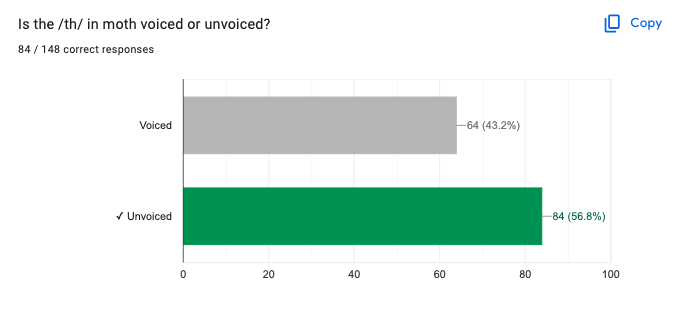
Clearly, it’s time we explained the difference! In this blog post, you’ll learn how voiced and unvoiced sounds are made, how to identify which sounds belong in which category and the reading and spelling rules affected by the category they are in. And to help you put your newly gained knowledge into practice, you’ll also find a list of activities that teachers can use to help develop the ability to identify voiced and unvoiced sounds for the purpose of reading and spelling.
When air moves up from the lungs through the vocal tract, it first must move through the larynx or ‘voice box’. Two folds of muscle and tendons, often called the ‘vocal cords’, project inwards from the sides of the larynx. The air passes between these two folds. If the folds are closed, the air may be forced to vibrate. If they are open, it will not. A voiced sound is produced when air from the lungs causes the edges of the folds to touch, close and vibrate. This creates a buzzing or humming sensation in the throat. Students need to understand that they use their ‘voice box’ (as well as their mouth) to make ‘voiced’ sounds. Because the folds are closed, there is no push of air through the mouth.
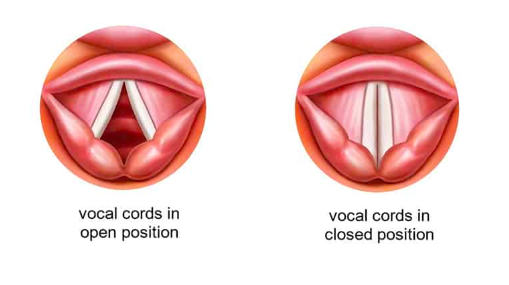
An unvoiced sound is made when air from the lungs flows freely to the mouth where the sound is changed by the action of the lips, tongue and teeth. The vocal cords remain apart, in an open position, so there are no vibrations in the throat. There is just a push of air that might sound like a whisper.
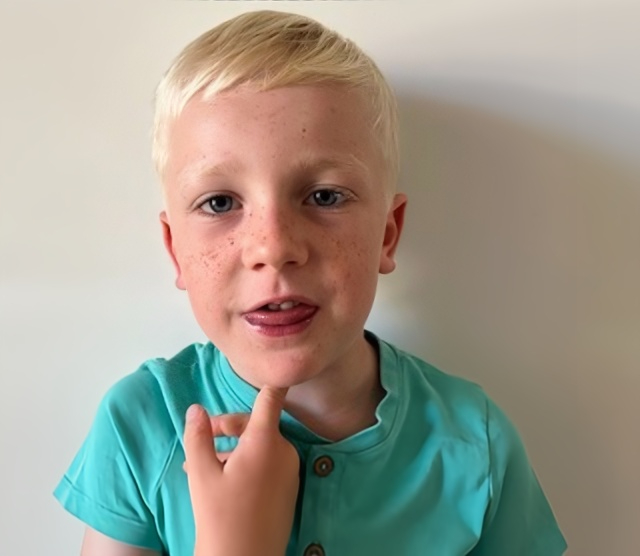

An easy way to determine whether a sound is voiced or not is to do the Voice Box check – place a finger or the palm of your hand over your Adam’s apple, the ‘bump’ at the front of your throat (as seen in the image above). This is the cartilage that covers the front of your larynx (voice box). As you pronounce a letter, making a sound, feel for the vibration of your vocal cords. If you feel a vibration, the sound is a voiced one. If you do not, it is unvoiced. If a student struggles to feel voice box vibrations, suggest putting a hand over each ear and listening for the vibration this way.
Another key distinguishing factor between voiced and unvoiced sounds, other than vibration, is aspiration. Ask students to hold a hand in front of their mouth and switch between pronouncing, for example, /p/ and /b/. The sound that releases the greater push of air onto their hand is the unvoiced sound.
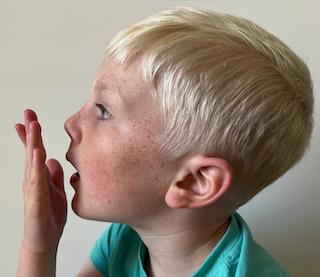
Alternatively use a piece of paper in front of the mouth to practise. The paper will not move with a voiced sound but with an unvoiced sound voice the paper will move slightly.

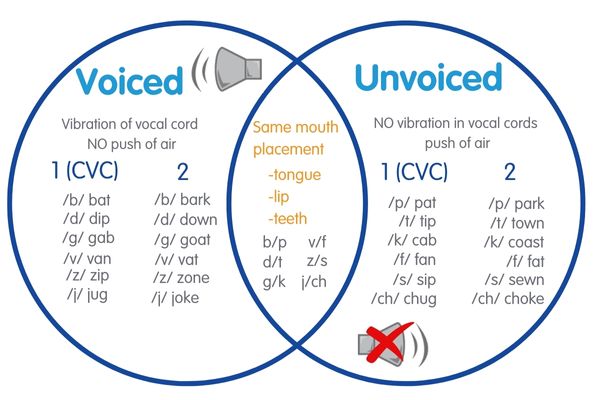
All vowels are voiced sounds in the English language. So is the semi-vowel ‘y’ when pronounced like a vowel rather than a consonant. The production of vowel sounds requires little to no restriction of airflow.
All diphthongs (where the sound begins as one vowel sound and glides to another vowel sound) are voiced e.g. ‘ow’, ‘ou’, ‘aw’, ‘au’, ‘oi’ and ‘oy’.
Consonants can be either voiced or unvoiced.
Here are 5 rules for determining whether a ‘th’ should be pronounced as voiced or voiceless in reading:





Understanding of voiced and unvoiced consonants is helpful when discriminating between words that contain ‘sound pairs’, for example, ‘pond’ and ‘bond’. They contain letters that are articulated in the exact same way by the mouth (tongue, lips and teeth) but one makes the vocal cords vibrate and one does not. Both /p/ and /b/ are made by pressing the lips together. Both are made by releasing air from the mouth. They are plosives. The slight difference in sound is the result of “voicing.” The /p/ sound is voiceless and /b/ is voiced.
Changing the voicing changes the meaning. There are several sound pairs like /p/ and /b/ that are very similar except for voicing. Per the image below, we call these ‘voiced and unvoiced pairs’ or, minimally, ‘sound pairs’.
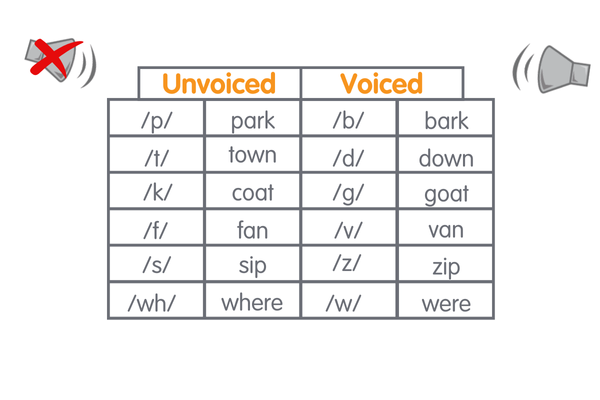
The challenge in pronunciation of particular consonant pairs will differ depending on the student’s mother tongue. In some languages, certain consonant sounds may be softened or closer in sound.
Not understanding the difference between voiced and unvoiced sounds (sometimes resulting in failure to articulate the sounds accurately) can reduce reading and/or spelling accuracy. For example, a student who says the voiced /b/ for /p/ might read ‘park’ as ‘bark’. If a student is whispering the sounds in a word to determine the correct spelling, it is possible that the vocal cords won’t vibrate, even on the voiced sounds, so you might see ‘frog’ written as ‘frock’. A student who knows how a sound feels is more likely to select the correct spelling representation, for example:
Do I write ‘whent’ or ‘went’?’ The ‘w’ in ‘went’ is voiced, so I should select the ‘w’.”
Understanding the difference between voiced and unvoiced consonants is also beneficial when learning the spelling rules or reading pronunciation for plurals and past tense.
There is only one consonant that can be either voiced or unvoiced and that is the plural ending ‘s.’ The rule is that if a word ends with an unvoiced consonant/sound, such as ‘f’, ‘k’, ‘p’ or ‘t’, then the final ‘s’ represents /s/, as in ‘books’. If a word ends with a voiced consonant or vowel, the final ‘s’ represents /z/, as in ‘chairs’.
The exception to this rule is when a singular word ends in sibilant ‘s’, ‘x’, ‘z’, ‘ch’, or ‘sh’. In these cases, ‘-es’ is added to the end of the word. The ‘-es’ has the /iz/ sound, as in “foxes.” It is more helpful for a student to do the Voice Box check rather than relying on rote-memorisation of spelling.
The past tense suffix ‘ed’ can represent different sounds depending on whether it follows a voiced or unvoiced sound. After a voiced consonant, such as ‘b’, ‘v’ or ‘l’ it usually is pronounced /d/ as in ‘robbed’. After a vowel (always voiced) it should be pronounced as /d/ as in ‘fried’. After an unvoiced consonant, it is usually pronounced /t/ as in ‘parked’.
There is an exception: if the ‘e’ of ‘ed’ is preceded by ‘t’ or ‘d’, the ‘ed’ should be pronounced as ‘id’. The ‘e’ is pronounced e.g. ‘rotted’ and ‘needed’.
Note: It can be difficult for some students who have English as an additional language to pronounce some final consonants in English, so they may need extra practice with this skill.
While identifying a sound as unvoiced or voiced is probably not one of the skills taught in most teacher training programs, it is an important aspect of phoneme knowledge. Hopefully this blog has helped you to develop a skill you can teach to your students so that they can read and spell with greater accuracy.
So, does ‘moth’ use a voiced or unvoiced ‘th’? 😉